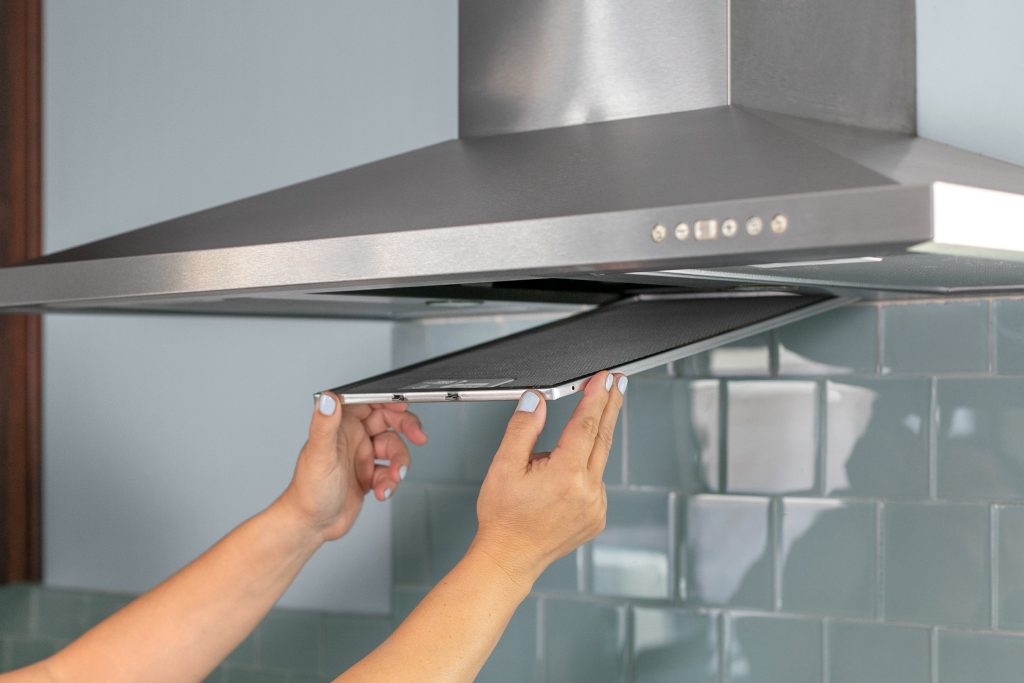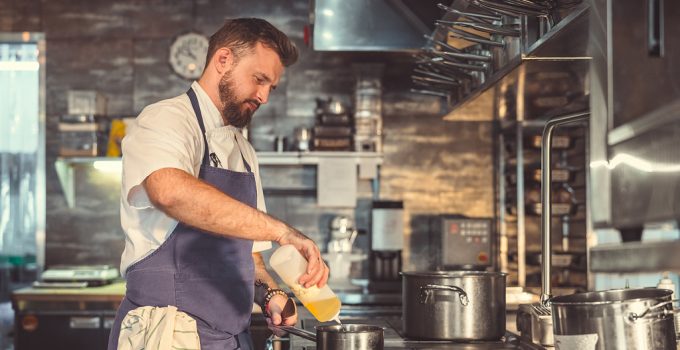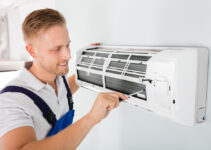Ventilation is mainly used in kitchens to collect, vacuum, and filter steam generated in food preparation. Cleaning of the kitchen hood prevents their spread to other parts of the building. During the technical processing, the food releases vapors, odors, and various gases that negatively affect the indoor air quality and thus the comfort of staying in those rooms. Therefore, the ventilation system is an essential part of any professional kitchen, and it is necessary to design and maintain it regularly correctly.
Elements that make up the kitchen ventilation: hood, hood filters, ducts (horizontal and vertical), ventilation, and filter sections. The kitchen ventilation system is specific and carries much more risk than the classic method for changing the room’s air. Therefore, it is necessary to clean this system in a shorter interval. Regular maintenance of this ventilation system is necessary for fire protection, health protection, environmental protection, device protection, and indoor air quality.
The fumes released in the process of food preparation are perceived by people only as an irritating atmosphere. However, research has revealed that these fumes can be hazardous to health because they contain dangerous chemicals, some of which are carcinogenic. The most significant risk is undoubtedly the outbreak of fire.
The accumulated grease in the ventilation system is easily flammable. Suppose a fire breaks out in one part of the ventilation. In that case, it can quickly spread to the entire system and other parts of the building, so it is necessary to act preventively, and prevention measures are decreasing the ventilation system fat, education, and control.
Regular degreasing of the ventilation system by professionals and authorized persons reduces the risk of fire. Degreasing of the kitchen ventilation system is carried out by various methods: mechanical cleaning, dry washing, machine cleaning.
Depending on the system and the number of deposits, these methods can be combined to achieve maximum efficiency. Machine cleaning is the most modern method of degreasing. This degreasing method’s most significant advantage is its adaptability to each ventilation duct, regardless of the cross-section model and dimensions. With this type of cleaning, the vents do not have to be dismantled. A device equipped with brushes and scrapers is inserted into the system. Simultaneously, the operator controls the speed and direction of rotation and the number of chemicals injected into the channel. The advantage of new technologies is that the camera can monitor the degreasing effect in the end.
If you want to learn more about cleaning a restaurant hood, you can visit hoodcleaningservicesatlanta.com and find out more, and below we will show you 3 simple steps for cleaning these devices.
1. Cleaning the Grease Receptacles

Source: hoodfilters.com
For the restaurant’s hood to be appropriately cleaned and prevent a potential fire, it is necessary to start cleaning a few steps. The first and essential step is to clean the grease receptacles thoroughly. These parts are located on each side of the commercial hood and are much easier to remove than you thought. Never throw all the dirt that you clean from here in the sink because it will clog it, but throw it in a bucket specially designed for that purpose. After this, soak parts of the hood in warm water and grease-cutting detergent to make sure you have removed all impurities. Once you have done the washing and degreasing, dry the receptacles before reinstalling.
2. Cleaning the Hood Filters

Source: thekitchn.com
After receptacles, it is time to clean the filters, which are also immersed in warm water and detergent to remove all grease. If the filters are really greasy and very dirty, you have to keep them in detergent for a few hours or leave them soaked overnight to remove the grease. After washing, if dirt remains on the filters, gently rub them with sponges or put them in the dishwasher. As with the hood’s previous parts, please wait for the filters to dry and only then put them back in place.
3. Cleaning the Hood’s Surface

Source: kuow.org
The surface is the last to be cleaned by spraying with a spray that has a degreasing component and then wipes with a soft cloth or ordinary sponge. If there is dirt that needs to be rubbed, use a nylon sponge to damage the restaurant hood.
Always choose a professional and reliable company that deals with cleaning restaurant hoods. Good companies have standard cleaning packages that will satisfy even the most demanding restaurants because cleaning the hood is serious.
Education is an integral part of fire prevention. Fire protection often deals with reducing the harmful effects after a fire breaks out. There are few measures for regular maintenance of kitchen ventilation systems that prevent fires. That is why the legislators recognized the necessity of maintaining kitchen ventilation. Ventilation systems in kitchens must be degreased by an authorized person at least once every ninety days.
In many cases, this service must be repeated more often depending on the capacity of the kitchen. After the cleaning, the contractor is obliged to issue a record of services performed. Because during the regular inspection of the catering facility by the inspection service and insight into the system’s condition, they can also request a record as a confirmation of the ventilation system cleaning work.
The golden rule does not use a hood without a filter. The filter’s purpose is twofold, first to prevent sparks’ penetration or sparks into the ventilation system. Second, most of the grease is retained on the filters, and you will need to clean the ventilation system less often. If the cooker hood does not pull, the system is either dirty or broken.
Then check the functionality of the fire dampers. Or, if you don’t have them at all, install them. They effectively prevent the spread of fire and smoke in the ventilation system. It is a simple assembly that keeps the damper open with an electromagnet. If the sensor’s temperature in the fan tube exceeds the set temperature, it releases, the damper closes and turns off the fan.







